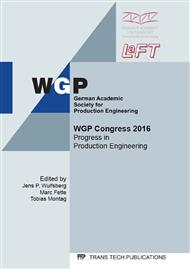p.19
p.27
p.35
p.43
p.51
p.59
p.67
p.75
p.83
An Experimental-Numerical Method to Determine the Plastic Work Converted into Heat Applied on AHSS
Abstract:
In this Study a Heat Transfer Model in Combination with Experimental Tests is Used to Determine the Portion of Plastic Work that is Converted into Heat (also Known as the Taylor-Quinney Coefficient, Inelastic Heat Fraction or IHF and Generally Noted β) during the Deformation of Two Modern Automotive Advanced High Strength Steels (AHSS) DP600 and DP1000. Therefore, Uniaxial Tension Tests were Performed under Vacuum in a Deformation-Dilatometer and the Temperature was Captured by Fine-Wire Thermocouples on Three Different Points on the Surface of the Tensile-Specimen during the Plastic Deformation. Afterwards, a Heat Transfer Model was Used to Calculate the Heat Loss at the Points of the Temperature Measurements and they were Accounted in the Final Energy Balance to Determine the Fraction of Plastic Work Converted to Heat. the Results Show that the Fraction of Plastic Work Converted into Heat is Decreasing from 1 to 0.21 over a Tensile Strain Range of 0 to 0.18. Finally, a Finite Element Model of the Tensile Test was Used to Show the Improvement of the Determined Factor in the Calculation of the Temperature Field Compared to the Classical Assumption that β Equals to 0.9.
Info:
Periodical:
Pages:
51-58
Citation:
Online since:
August 2016
Authors:
Keywords:
Price:
Сopyright:
© 2016 Trans Tech Publications Ltd. All Rights Reserved
Share:
Citation:


